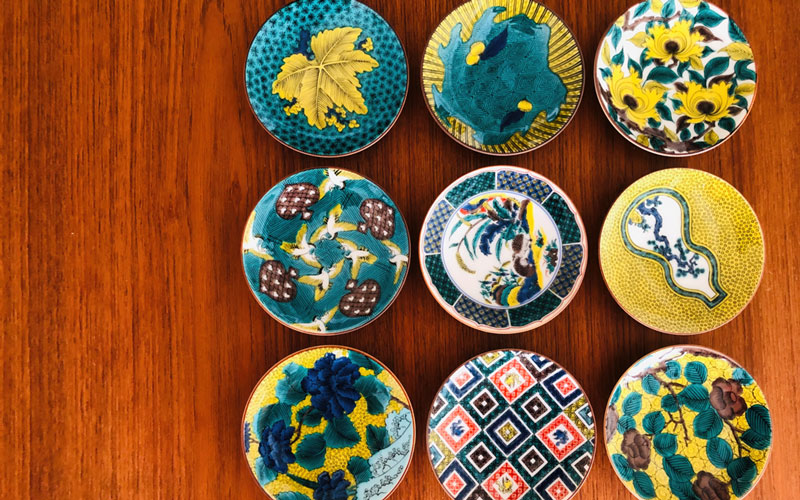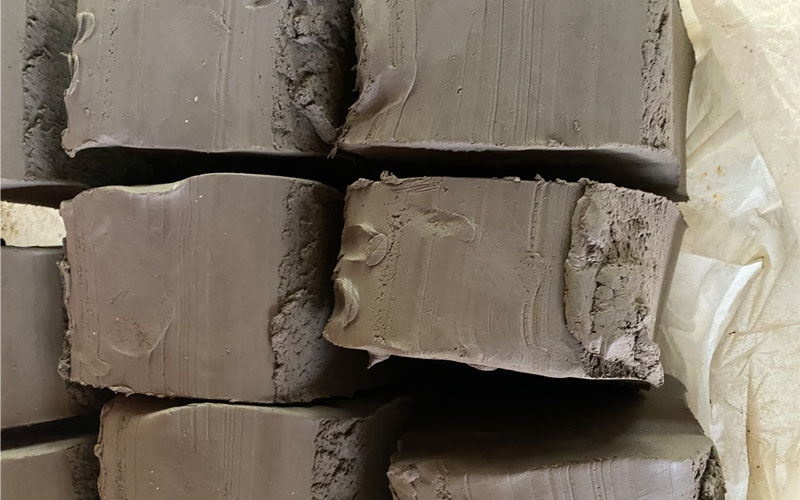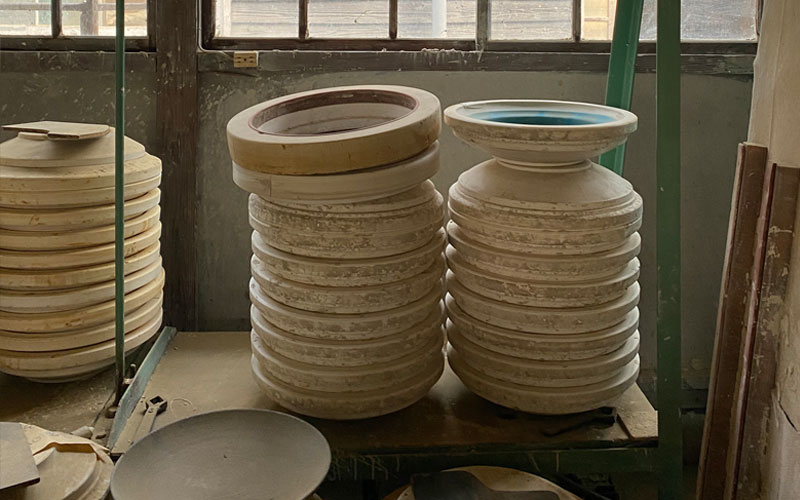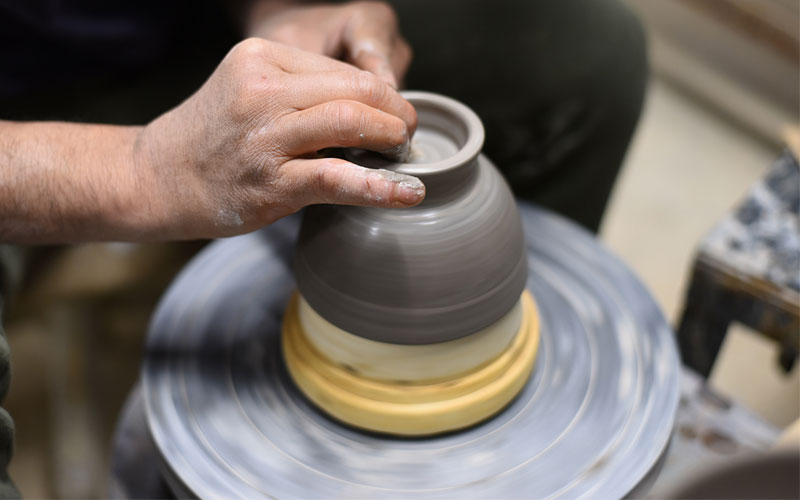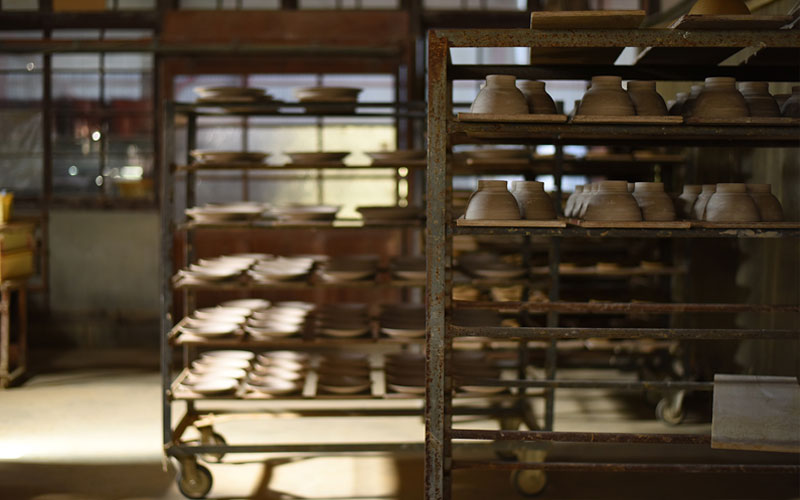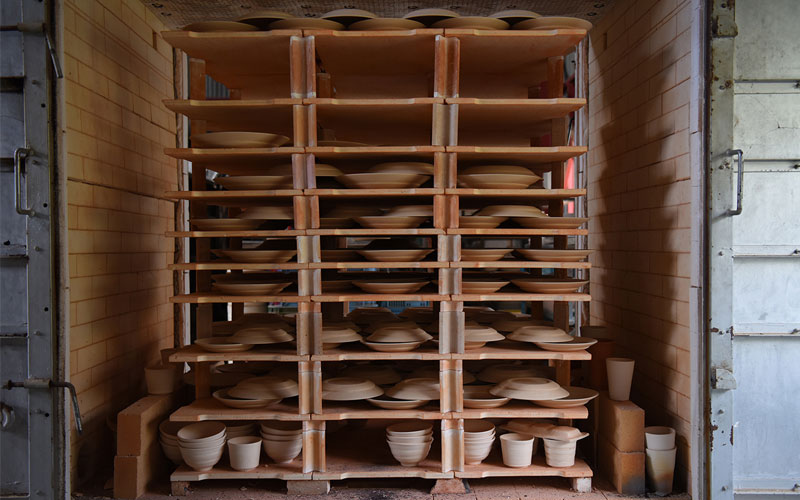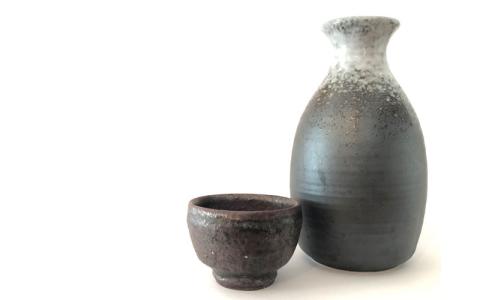
At UKA, the exquisite food is in the spotlight, but the stage is set by the carefully curated restaurant design – right down to the tableware. The restaurant team of JAPAN HOUSE Los Angeles’ acclaimed MICHELIN Guide-selected modern kaiseki restaurant have selected ceramics from around Japan to make each meal a feast for all senses. In this series, we highlight selected ceramic artisans and historic producers featured at UKA, and the places they hail from that might inspire your next dream trip.
One of Japan’s most beloved forms of pottery is Shigaraki-ware (Shigaraki-yaki), a stoneware ceramic produced in Shiga prefecture and one of the country’s “six ancient kilns” (the others being Bizen, Tamba, Echizen, Seto, Tokoname). Though ceramics existed in various forms in Japan since the Jomon period (8000–5000 BCE), the craft began to truly blossom in the 12th century with the rise of new production techniques, consumers, and roles in culture (for a full overview of Japan’s ceramic history, click here). Kilns were first established in Shiga when the Emperor Shomu built a new capital there in 744 following a rebellion and needed ceramic tiles created for his palace in Shigaraki. From then on, Shiga became a major ceramics production hub due to the many skilled artisans who settled there, as well as the reddish clay from the banks of local Lake Biwa that allowed distinctive forms and styles.
During the Kamakura period (1192–1333), Shigaraki-ware grew in popularity due to its strength, versatility, and uniquely rugged style and subtle natural details. The kilns and potters of the region produced many types of vessels, but they were particularly known for everyday utensils such tsubo (storage jars), suribachi (grinding bowls) and kame (jars). As the tea ceremony flourished in the Muromachi period (1338–1573), Shigaraki-ware became appreciated by tea masters for its humble, rugged appearance that fits well with “wabi sabi” aesthetics.
Creating a typical piece of Shigaraki pottery is a meticulous process, beginning with the selection of local clay which typically has a high iron content and fires to a warm, earthy tone on the vessel surface. The potter then throws the vessel form, applies subtle incised designs and then lets it air dry. Finally, it is fired in a wood-burning kiln where temperatures can reach over 1200 C, depositing ash onto the vessel surface to creates a distinctive natural ash glaze that contrasts with the warm iron brown of the unglazed areas. The finished vessels feature natural imperfections and a rustic beauty that were beloved in the tea ceremony.
For centuries, Shigaraki-yaki was employed in tea ceremonies and everyday kitchens alike, and Shigaraki artisans continued to innovate their craft and style, often passing skills down through the generations (to read more about various types of heritage companies in Japan, read this article on long-lasting businesses).
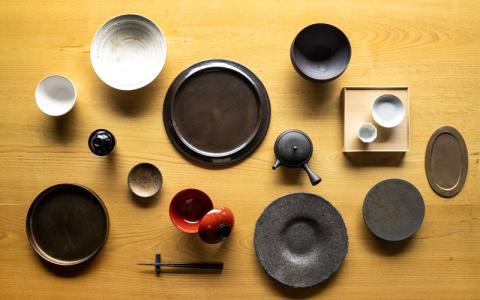
Hissan Pottery is such a heritage company, founded in 1870 in the town of Koga in Shiga as a manufacturer of many items from tea utensils to flower vases. After the current fifth-generation owner took over his family company, he decided to focus on exquisite tableware for restaurants and home chefs domestically and abroad. UKA restaurant at JAPAN HOUSE Los Angeles features Hissan’s products as a “canvas” for the art of modern kaiseki. UKA guests can experience a spectrum of Hissan’s signature styles, from delicate off-white plates to metallic-black serving platters and iridescent chopstick-rests.
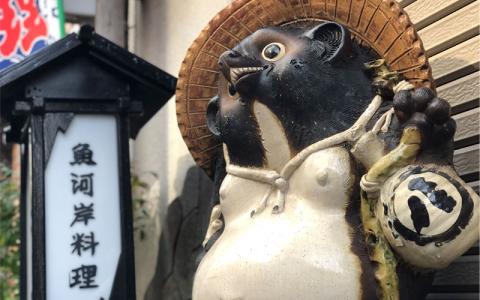
For those inspired to see Hissan and Shigaraki-ware in its place of origin, there are many sights worth visiting in Shiga prefecture. For ceramics enthusiasts, it is possible to not only explore Shiga prefecture’s many diverse ceramics kilns but also take a class to learn more first-hand. Animal lovers will enjoy sightings of real and ceramic versions of tanuki, a species of “raccoon dog” that rose to legendary status as a folkloric character. This mischievous creature is often portrayed in Shigaraki ceramics and exported to restaurant entrances around the nation.
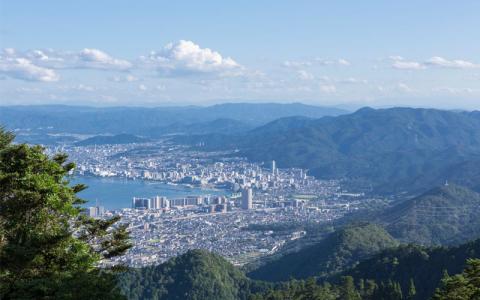
© JNTO
A main attraction of Shiga prefecture is Lake Biwa, the ancient lake responsible for creating the deposits of high-quality clay used in Shigaraki. The largest lake in Japan and one of Japan’s great beauty spots, it offers travelers the chance to take cruises to island-hop and experience the bounty of its waters in its treasured seafood. Besides dishes like Biwa trout and the ducks that are used in local staple “kamo ryori” hotpots, Shiga is also known for melt-in-your-mouth Omi wagyu beef. Lake Biwa is also the source for Biwa Pearls, one of the world’s most unique gemstones highly prized by designers for their subtle colors and shapes (read more about Biwa Pearls and their long history here). Koka City, just over an hour from Kyoto, makes for an intriguing destination for history buffs and general travelers alike, with its crafts, art, temples, local cuisine, and a few local “icons” with worldwide fame. In the Edo period (1603–1868), the region was self-governed by clans of ninja families – a history reflected in the very popular Koka Ninja Village, a museum complete with a recreated ninja house from the 1800s.
Luckily, even if a trip to Shiga prefecture, Shigaraki and the idyllic shores of Lake Biwa isn’t in your immediate future, visitors to UKA can experience some of Shiga’s sensory splendor in the form of Hissan pottery. Sitting down to dine with these heritage-infused ceramic pieces brings a taste, and a texture, of this singular place to the table, and visions of future travel to one’s dreams.
Related Articles
Sensory Journeys in Japan |
Awaji Island 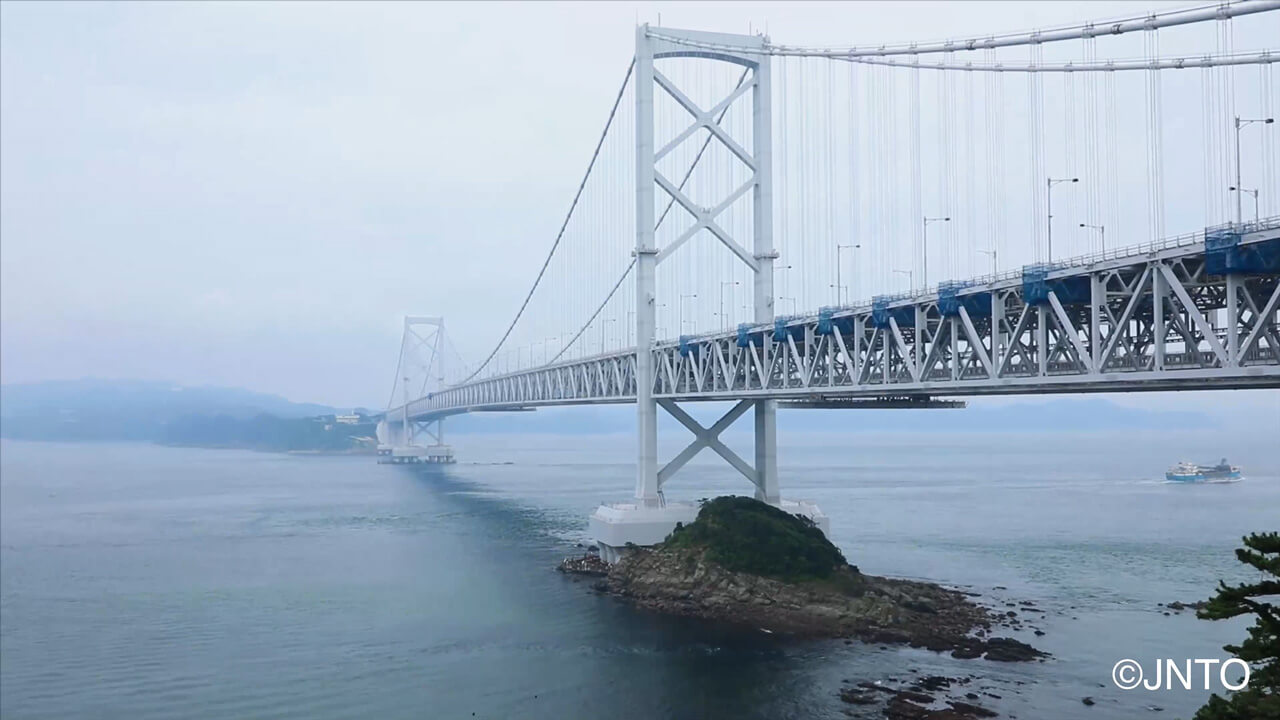
Sensory Journeys in Japan |
Hokkaido 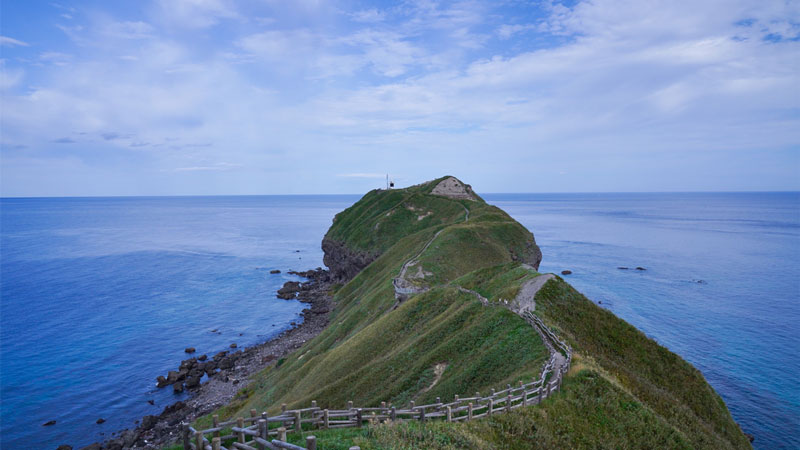
Sensory Journeys in Japan |
Spotlight on Kutani Bitoen in Ishikawa Prefecture 